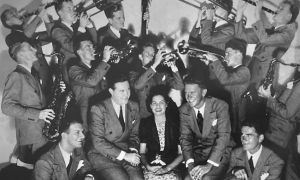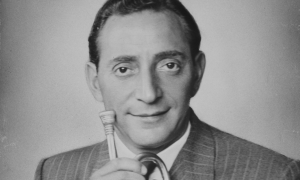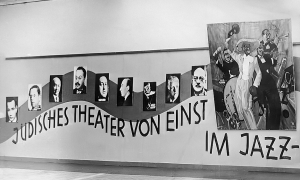Home » Jazz Articles » History of Jazz » Where Clifford Brown Learned to Play: Love In A Wilmingt...
Where Clifford Brown Learned to Play: Love In A Wilmington Neighborhood

When you look at the whole note, you should be able to see everything it represents.
—Robert "Boysie" Lowery
Robert "Boysie" Lowery was trumpeter Clifford Brown's first music instructor in the early 1940s, and mentored decades of young musicians thereafter in Wilmington, Delaware. He taught as a sideline to club work, a resource for his community but caring not so much about being paid for his lessons. That generosity continues with the eighth year of a tuition-free Boysie Lowery Living Jazz Residency, in conjunction with the Clifford Brown Jazz Festival, which runs in its third decade over the weekend of June 21-24 in 2023, just blocks away from the Eastside neighborhoods in which Lowery taught.
In the 1950s, Clifford Brown brought a bright virtuosity to his playing that contrasted to the stylings of the other great innovator of the period, Miles Davis, and a drug-free joy that might have established a different course for musicians who thought that substances, heroin especially, were necessary to their playing. Brown's death in June 1956 at age 25 in a car accident—while traveling to Chicago for a performance—terminated the promise by which he had already transformed the instrument.
As a teenager, he had been heard by Charlie Parker and encouraged by Dizzy Gillespie. In his early twenties, he had toured Europe with Lionel Hampton, played at Birdland in New York with drummer Art Blakey in a band that became the The Jazz Messengers, and recorded as a leader for Blue Note. His partners in his last major group were drummer Max Roach and saxophonist Sonny Rollins.
Brown's instruction began at age 12 when his father brought him to "Boysie" Lowery for first lessons on the horn. Lowery was only 29 himself when he began teaching Brown, but over decades came to be an elder sage in the Eastside. Born in 1914, Lowery had been raised in a musical family that played clubs, marching bands and travelling circuses in North Carolina. He had received some basic lessons in trumpet from his father, and tutelage in reading and theory from an older brother, but much of his playing came naturally by ear.
Moving north, Lowery played in jazz bands in Wilmington and Philadelphia, about thirty miles north, and in clubs along the Atlantic Coast. Philadelphia served as an incubator and testing ground for musicians routing to and from New York. He formed a friendship with Gillespie, which helped in understanding the new genre of bebop.
Wilmington had a robust environment of nightclubs, amid its other commerce, with a midnight closing hour earlier than locations further out on the road, and guaranteed payment at the end of each night, unlike the financial unpredictability of Philadelphia. Lowery chose to stay closer in to home, he said in an interview now on Vimeo with musician and attorney Jorge Arciniega, and developed his teaching practice as a sideline and as a resource for youth.
Lowery's approach to tuition was recalled by music professor Don Glanden, producer of "Brownie Speaks," another biographical documentary, in an interview with Delaware Today magazine. "He started teaching primarily kids from the black community. If they could afford it, fine. And if they couldn't afford it, fine. He'd have people in his house for however long they needed to be there. If they didn't have a place to stay, they would stay there for a couple of nights—just this really kind, nurturing person." Read our coverage.
The Manner of Teaching
The Clifford Brown Jazz Festival in 2023 is free, as it has always been, with support from donations and government, cultural and business entities. Its 2023 calendar entertains and educates across a span of history, current times and broad geographic flavors. Among the presentations, Angelique Kidjo, and Monty Alexander's "Harlem Kingston Express," open with their blends from African, Caribbean and South American sources.For the Saturday headline shows, Japanese pianist Hiromi Uehara advances fusion with "Sonicwonder," her new electrified four-piece combo with trumpeter Adam O'Farrill as an added element, Pianist Jason Moran addresses the legacy of World War I bandleader James Reese Europe's Harlem Hellfighters with "Absence of Ruin." Kamasi Washington brings his mix of mainstream, world, hip-hop, spiritual and R&B. The advanced curriculum of the Jazz Residency, for students selected by application from university music programs, also leads to showcase presentations on festival stages.
Lowery developed an instructional method based on ear training, and later a system which decoded and communicated what had been the chordal mysteries of bebop. Lowery remembered that Brown was not initially his best student, and thought others had greater promise. Marcus Belgrave, later a member of the Ray Charles Orchestra and a staff musician with Motown, was one of them.
What Brown especially brought was a seriousness, a great interest in the instrument, and dedication to practicing. He came for regular weekly lessons, then the student jam sessions Lowery convened in his basement and next introduction into club work. "He really wanted to get out of it everything he could, that's why he stood out more," Lowery recalled years later. "Not right off the bat, after he learned exactly how to hear. I have a method, and when you learn that method you can actually hear what you're going to play. He got it."
Lowery's lessons with Brown began not from a book, but, as with most of Lowery's students, in teaching them how to hear, explained biographer Nick Catalano in Clifford Brown: The Life and Art of the Legendary Jazz Trumpeter (Oxford University Press, 2002). Lowery believed that students had to hear things before they could do them. He started with a conventional scale, with the simple observation that any note within that scale can be divided into its component values: a whole note into half-and quarter-notes, eighth-notes, sixteenths. Then, he asked how those notes could be divided and grouped: for example, a quarter-note, then sets of eighths or sixteenths, a whole note again or other choices, into an improvisational direction, feeling the time and then following it. "When you look at the whole note, you should be able to see everything it represents," he instructed.
The student would be directed to write out a scale and interpret how he would like to play it, with what weight assigned for each note, proceed without alteration, and then build in different directions and values. Lowery next placed the notes within chords into groupings, what he called "The Classes" of notes. "The Classes" thus were not simply the instructions themselves, but exercises moving between the stair-stepping "Classes" of notes. Dexterity, and later improvisation, came by playing notes in combinations of the available variations of value.
Lowery's approach was mathematical, but he wanted his students not only to calculate in their brains where the math was taking them, but to anticipate by ear the approaching notes as well. His system guided how to plan for the chord changes that were to come, and improvise upon that anticipation. There was always an emphasis on giving every note its full assigned value of whatever increment, as strikingly exhibited later in the precision of Clifford Brown's playing.
Lessons taught how harmony functioned and how harmonic movement was experienced through specific exercises. Chromatic enclosures lead into, through, and out of chords. Practicing small bits of harmonic progressions repetitively was also a building device. The seemingly random tangents of bebop were thus rendered as science.
Over the years, other musicians including such stellar trumpeters as Wynton Marsalis, Hugh Masakela and Valery Ponomarev came in for consultations. In his teens, saxophonist Ernie Watts was a regular Lowery student: trumpet and the tenor saxophone cross-reference each other, both pitched in the key of B-flat.
Pedagogy Out of Pandemonium
Trumpeter Gerald Chavis, now director of the Clifford Brown Jazz Festival orchestra, was one of Lowery's students, decades after Brown. He first encountered Lowery at the neighborhood Christina Cultural Arts Center in Wilmington, which continues to offer music, dance, movement and visual arts classes paired with academics. Chavis also set down in book form Lowery's Method for Jazz Improvisation, available from qPress Music Publishing, which reveals Lowery's system with sheet music examples and exercises.Chavis remembers the seeming pandemonium of a Lowery group lesson. "There might have been ten musicians of all different ages, all working on different things, in one big room, sounding like total chaos," he told a Delaware Public Media podcast. "And he'd be listening to each of us and as we were practicing, I'd be facing one corner, someone else was facing another corner, and this guy's on the piano —and he'd be listening and he'd holler out across the room, 'Give that quarter note its full value' or something like that. He would be listening even if he was working with somebody else. Things would catch his ear."
Over more than fifty years of teaching, Lowery's home was a schoolroom, clubhouse and shelter for the youth on Wilmington's Eastside. When Lowery taught from his home, it was considered a neighborhood refuge. The basement was set up as if for a band. While Lowery focused on the music, his wife Edna focused on everything else. Chavis is not shy in stating that the great patience of the Lowerys came out of love.
"We all called her mom, she was the mother hen. She took us aside and would tell us things we needed to know. Because we were all young musicians, wild and crazy," Chavis said. "It could be anything from clothes that didn't match to needing to comb your hair. So she would take care of that part —and make sure you were fed —and he'd take care of all of the educational stuff, the musical stuff."
Chavis started with Lowery after a year of university music theory and performance, and was playing a busy schedule with dance bands from the progressive songbooks of Kool & The Gang, Earth, Wind & Fire and Stevie Wonder. Formal schooling had trained him to respond, but he could only mimic what others dictated. He did not know how to think about music for himself, and was unable to put together ideas for self-expression.
Chavis recalled how meticulous was Lowery's teaching style. "With other teachers, once I could play the notes in the right places, we'd move on to something else," Chavis explained. 'With Boysie —once I got the notes in the right places —he'd say, 'Now how is that supposed to sound?' Well I didn't know —and he would just smile, and tell me to keep practicing. He never gave you the answers to anything, but he would ask open-ended questions and the answer would be different for different individuals, so you would have to answer it for yourself."
Chavis also recalled, in an interview with Brian Zimmerman of JAZZIZ magazine, an episode by which Lowery required repetition of a series of blues etudes which sounded to Chavis as if they were classical pieces. Lowery would not identify the source material, and continued to have Chavis work on it, to the younger man's frustration. One day, Chavis was listening to a Clifford Brown record and heard something familiar. He stopped the piece and went back for another listen and realized the passage he had been playing for months was a transcription of Brown's solo in "Blues Walk."
"But it didn't sound like that when I played it. I was playing notes; I wasn't making it breathe. It sounded totally foreign until I listened to this solo and followed it note for note on the paper." The next time he returned for a lesson, Chavis matched as closely as he could Brown's solo. Lowery just smiled. "Man, the smile on his face was priceless. He just nodded and said, 'Yeah.'"
Lowery encouraged his students to pattern themselves after musicians for whom they had an affinity, but discouraged them from getting stuck in copying. Clifford Brown, for example, first followed closely in the plush style of Fats Navarro, until moved by Lowery toward finding his own voicing. At one point when Chavis returned after an extended absence, having stalled in his progress even as he toured in popular bands, Lowery asked "Where do you want to go?" Chavis couldn't answer: again, he didn't know. So, Lowery set out to help bring Chavis' own identity to the horn.
Solidarity Within Segregation
The Eastside neighborhood in which Brown and Lowery lived had remained largely segregated in the years after World War Two into the 1950s. The "Mason-Dixon Line" which separated southern slaveholding states from northern "free" states formed Delaware's western border. Delaware was thus immediately across the line for the great migration from the south, and new arrivals settled into the Eastside of Wilmington. It was a town contained within the larger city, with all the interactive commerce of restaurants, clothing stores, barbershops and hair salons, a newspaper, service stations, everything as otherwise found outside its confines.Before the civil rights movement, Wilmington and many other medium-sized Northern cities remained in a state of de facto segregation. That solidarity ironically was diluted by integration, and, later, "urban renewal" that gutted neighborhoods and divided cities with freeways.
Brown's own family home was torn down, although now a grassy parklet there is marked with a memorial plaque and decorative sidewalk at what had been 1013 Poplar Street. The avenue has been renamed Clifford Brown Walk, a pleasant, tree-lined block of two-story brick homes between East Tenth and Eleventh Streets, just two blocks south of Howard High School, which Brown attended. Lowery's home on Pine Street was two blocks further east. The whole neighborhood is a short distance from Rodney Square at the center of downtown where the Clifford Brown Jazz Festival is held.
While Lowery was teaching students privately, the youth of the Eastside were oddly benefitting within the segregated public school system. For all its evils, segregation compelled a closeness, expressed in the institutions of a unified community, particularly education.
Black educators with advanced masters and doctoral degrees were barred from white universities. Diverted to teaching high school, Howard's faculty nevertheless maintained extremely high standards, with a supportive neighborhood and students buying in to compete for excellence. "That school put on operas. The teachers lived in the community," Don Glanden recalled. "The percentage of doctors and lawyers that came out of that is simply astonishing. That was a very nurturing, positive environment in the midst of this segregated system."
Howard's music department had Harry Andrews, who would become music superintendent for all the city schools, and Sam Wooding, who had toured overseas with an early jazz orchestra. In the spring of 1925 Wooding took his Chocolate Kiddies Revue on an extended tour of Europe and later even into Russia with an 11-piece jazz orchestra, including trumpeter Tommy Ladnier who had played in the band of "King" Oliver in Chicago, and an assemblage of singers, comedians, and 30 dancers. Duke Ellington wrote four songs for the show in 1924 before Wooding embarked to Europe. They were Ellington's earliest compositions for a revue production, preceding by three years his own run leading the house band for New York's Cotton Club revues.
Wooding continued in Europe and South America for long periods before returning home in advance of World War Two. He never gained the renown of Ellington or Fletcher Henderson who also had a big band in that period, in part because he was out of the U.S. for long durations, leaving a void for others to fill. He subsequently earned a master's degree from the University of Pennsylvania, through which he eventually came to teach at Howard High into the 1940s.
Wooding's memoirs reported that he gave some lessons to Clifford Brown, but most of Brown's important instruction after Boysie Lowery appears to have been in the Howard music program under Harry Andrews. Andrews was primarily classically oriented, but also had led a jazz band in Europe. After World War Two, he undertook advanced academic work including the study of brass instruments at the University of Michigan, and brought that to Howard High.
Students were instructed in the European classics, and for trumpet, the Prescott system developed in the 1930s to follow the classical Arban method developed in the 1800s. Andrews transmitted the European music tradition and linked jazz and classical lines, with formal techniques made available for the jazz player.
Howard had marching bands and concert bands. Clifford Brown participated in all of it, and was hungry for more. Andrews recalled Brown dropping by at the end of school days and asking if there was time for another lesson, "And we'd go to it."
Traditions Over Time
The Lowery Jazz Residency program continues with high standards of instruction, for the university students visiting for the intensive sessions. Master class clinicians have included Aaron Diehl, pianist for Cecile McLorin Salvant and leader of his own groups; vibraphonist Warren Wolf; and Brooklyn-based Chilean saxophonist Melissa Aldana. Alumni have included Chien Chien Lu, vibraphonist with trumpeter Jeremy Pelt and an independent performer/composer with bassist Richie Goods. Instructors are from the Delaware and Pennsylvania university faculties and performance venues: drummer Matt Scarano; bassist Mike Boone; pianist Tom Palmer; and E. Shawn Qaissuanee on guitar, percussion, and other strings.Two institutions continue community on the edge of Wilmington's center in the manner of the old Eastside. The Christina Cultural Arts Center on North Market Street hosts a variety of arts, music, movement and academics programs. It's the same organization in which Boysie Lowery taught Gerald Chavis, and a studio there bears Lowery's name. Originally founded to provide activities for immigrant Polish and Swedish working-class families, it became realigned in a changing Wilmington to serve as a community-based arts center with an emphasis on preserving African-American cultural heritage.
A block away on North Shipley Street the Episcopal Church of Saints Andrew and Matthew merged two separate congregations, one primarily black and the other white, specifically to bridge racial divides, and hosts jazz vespers weekly and Ellingtonian sacred music presentations during the Clifford Brown Jazz Festival. Jonathan Whitney presides over those and directs the Lowery Residency.
The festival is supervised by the city's Cultural Affairs Director Tina Betz, through Cityfest Inc., a city-affiliated non-profit, in association with the office of Mayor Michael Purzycki, who has commissioned several initiatives to rehabilitate sections of the Eastside. Police horse stables that had lain abandoned for decades were rebuilt and repurposed into arts and recreation spaces. An Eastside Historic District has raised the profile of a neighborhood that had greatly declined. Clifford Brown Walk leads to landscaping and monumental sculpture in a Clifford Brown Listening Garden on the banks of Brandywine Creek. Motion-activated speakers play snippets of Brown's music. Another "Creative District Wilmington" extends westward below the downtown.
In a chronicle of jazz in Wilmington in the 20th century published by the regional press Broken Turtle Books, author Steven Leech titled it Boysie's Horn to emphasize Lowery's central role in raising up generations of musicians to stock the variety of venues emerging over the years, before Lowery passed in 1996 at age 82. He imagined that in the quiet of dawn at the center of downtown Wilmington, close listening may detect the traces of all that history in the lingering whisper of a trumpet.
Tags
History of Jazz
Clifford Brown
Arthur R George
United States
Delaware
Wilmington
Clifford Brown Jazz Festival
Miles Davis
Charlie Parker
Dizzy Gillespie
m; Lionel Hampton
Birdland
Art Blakey
Jazz Messengers
Blue Note Records
Max Roach
Sonny Rollins
Angelique Kidjo
Monty Alexander
jason moran
James Reece Europe
kamasi washington
Marcus Belgrave
Ray Charles
wynton marsalis
Hugh Masakela
Valery Ponomarev
ernie watts
Kool & The Gang
Earth, Wind &Fire
Stevie Wonder
Fats Navarro
Joseph "King" Oliver in Chicago, and an assemblage of singers, comedians, and 30 dancers. {{m: Duke Ellington
Cotton Club
Cecile McLorin Salvant
Warren Wolf
Melissa Aldana
Jeremy Pelt
Richie Goods
PREVIOUS / NEXT
Support All About Jazz
 All About Jazz has been a pillar of jazz since 1995, championing it as an art form and, more importantly, supporting the musicians who make it. Our enduring commitment has made "AAJ" one of the most culturally important websites of its kind, read by hundreds of thousands of fans, musicians and industry figures every month.
All About Jazz has been a pillar of jazz since 1995, championing it as an art form and, more importantly, supporting the musicians who make it. Our enduring commitment has made "AAJ" one of the most culturally important websites of its kind, read by hundreds of thousands of fans, musicians and industry figures every month.
























